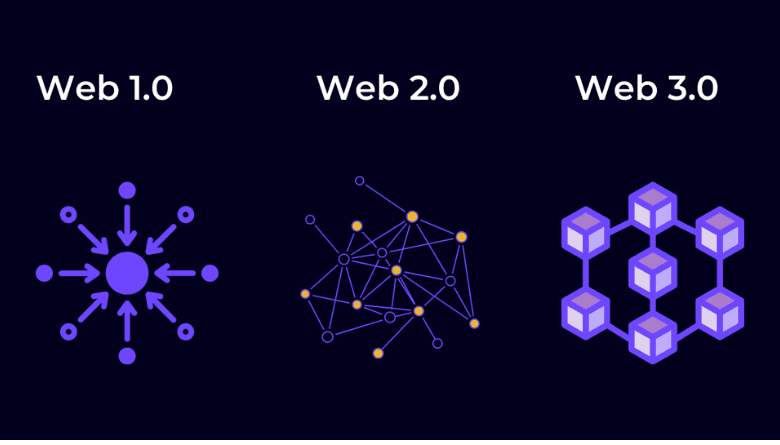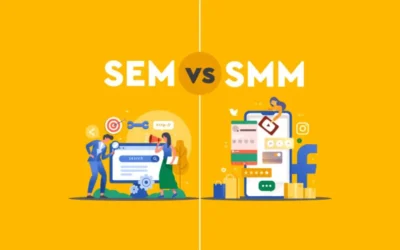What Does Web3 Imply For Your Company?


A new tech ecosystem is promising to transform both analogue and digital business models: web3.
Web3 is not just one type of technology. More than just technology is converging here. This approach has the ability to both deepen customer relationships with brands that are keen to collaborate with them in this market and to empower consumers themselves. Web3 dramatically alters how we conduct business and establish personal connections with one another. In fact, over the coming several years, web3 is predicted to radically change the way we view our online presence.
The web develops
The “read only” internet is commonly referred to as the “original web,” which was merely a means of connecting computers and users globally (hence the name World Wide Web). The read-write internet, also known as Web2, expanded content and connections to include real-time content and news, online shopping, social networking, and more complex web applications. We are currently in a situation where everyone is producing and disseminating content on social media. However, the platform corporations own and have access to the majority of this data.
Web3, also known as read-write-own, is the next significant development in the development of online interactions. By creating new ownership and transitional models that span and combine the digital and physical worlds, it makes it possible for a bridge between the actual and virtual worlds.
What ought to I understand about web3?
The core idea of web3 is decentralized ownership, which is currently made possible by blockchain technology. The distributed ledger creates a verifiable and traceable method to confirm the legitimacy of goods and assets. Additionally, it presents a method of paying people for their time, information, and contribution while yet allowing them to maintain ownership over their personal data. For instance, a marketer might provide customers with some form of payment in exchange for their willingness to disclose their income.
Suddenly, it’s conceivable to compensate or reward customers and brand aficionados for their contributions to the creation of a new good or service, whether it’s a clothing line or a catchy soft drink bottle label. Additionally, tokens that represent a “deed” of real estate in the physical world, as well as digital sports cards, can be purchased, sold, and traded in a virtual NFT gallery.
The core elements of web3 are three:-
- Ownership: Prior to web3, tokenization was only accessible for one-time transactions or continuous interactions at the point of contact. As a result, online possibilities were constrained. Blockchain, however, enables a completely new ownership model. Digital assets resemble physical assets increasingly in this new environment.
Digital assets can be carried with a person wherever they go and transferred to another party at any moment. A movie or book purchased online might be unexpectedly sold to a friend, requiring a physical transaction at the time.
- Incentives that are more closely aligned: Web3 encourages the ownership of digital property to promote closer consumer-brand alignment. It’s important to recognize this’s significance. One-way connections and things like linear subscriptions vanish in a web-3 world. All of a sudden, customers are partners and even owners.
The best web3 development company that has a stake in the web3 era now has the chance to develop a new, more engaged category of brand advocate. A social media influencer, for example, can decide to advertise a company or product on their own platforms for reasons other than financial gain. These reasons could include the chance to have an impact on how a business is managed, equity, or co-branding chances.
- Community: The notion of community as existing wholly outside from ownership and aligned incentives is alluring. In fact, there is a close connection between the three. A new and possibly more valuable community is produced by the incentives and rewards produced by tokenization. Businesses that solve this equation correctly may have the chance to develop a new category of super-loyalty. Art, movies, images, and online posts produced by collaborative communities can help marketing teams and website designers build a brand. Not less significant: People who live in a community are more likely to conduct more transactions in the real world.
What may Web3 Appear Like?
Think about the current loyalty programmes. Customers are only able to use their loyalty benefits on one platform at this time. They are able to use their rewards only on additional services or goods from that particular brand.
With direct ownership and the option to sell to other users in exchange for money, a web-based loyalty programme expands the potential uses for loyalty rewards. All parties — the brand, the vendor, and the buyer — stand to gain from this. This opens up the marketing funnel to more consumers, generates more secondary sales revenue, and increases demand for the brand.
In web3, things can be held in both actual and virtual environments. It is also feasible to transfer digital assets, including NFTs, to develop new kinds of ownership that are improved and reinvented as well as new business models. Through the use of technology like blockchain, the system is made trustworthy.
The way consumers and brands communicate online could alter if this kind of ownership model were introduced. Online environments now resemble the real world more. By connecting goods and services in ways that weren’t previously feasible, Web3 has the potential to change business-to-business (B2B) collaborations.
What to think about next and why web3 is disruptive:-
Although web3 technology’s underpinnings are currently in place, it will take some time for people and organizations to implement it. Here are some things to think about.
- Learn about Web3 now because it will arrive soon. Innovation in Web3 is happening quickly. Adoption is anticipated to quicken if firms comprehend how to employ it and see achievement in test initiatives. Similar to how some firms have used influencers and social media to their advantage, companies that comprehend technology and use it well can gain an edge. For the time being, business and technology executives can gain from becoming familiar with web3 and creating a plan to take advantage of the opportunities it offers.
- Web3 has the potential to transform governance and oversight. Its decentralized structure eliminates the requirement for a third party to supervise operations. Web3 has the ability to be self-regulating and self-monitoring just by virtue of the way the protocols are developed, much to how cryptocurrency operates today. Whatever level of involvement your business is considering, you should familiarize yourself with the potential architecture of a web3 world and the steps you need to take to feel at ease with it.
- Brands and connections need to be rethought and rewired. Web3 represents a significant shift in how businesses and consumers communicate. Business executives need to broaden their perspectives on relationships and give authenticity priority. Web3 introduces a full two-way link with each customer, giving them a variety of ways to interact with the business, among other things. Because of this, it is feasible to both buy from and sell to them. Instead of seeing brand champions as customers or subscribers, businesses might see them as partners.
- New revenue streams and business strategies are introduced by Web3. The initial sale of digital goods and services provide a chance for new revenue streams, but this is only one aspect of the situation. As NFTs and other assets are acquired and exchanged down the value chain, there is also a chance to realize residual value in perpetuity.
The most prominent instances are in the fields of art or music, when a creator is paid each time one of his or her works is sold. This can occasionally result in a never-ending stream of income. NFTs, which act as access tokens for goods, services, or value-added components, token-based loyalty programmes that enable users to buy and sell their points or currency, and blockchain-enabled supply chains that establish a single source of truth among various businesses are other ideas to keep an eye on.
You’ll undoubtedly need to stretch yourself in order to make progress (or at least rethink some things). Customer control over things like loyalty points and NFT assets has increased as a result of web3 and a new ownership philosophy.
Business leaders who are used to maintaining total control over their assets and the people who create them could find this disconcerting. Ethics, privacy, and cybersecurity are other topics to take into consideration. Despite the fact that blockchain authenticates transactions, a web3 business model could still be threatened by malware or subpar technology.




